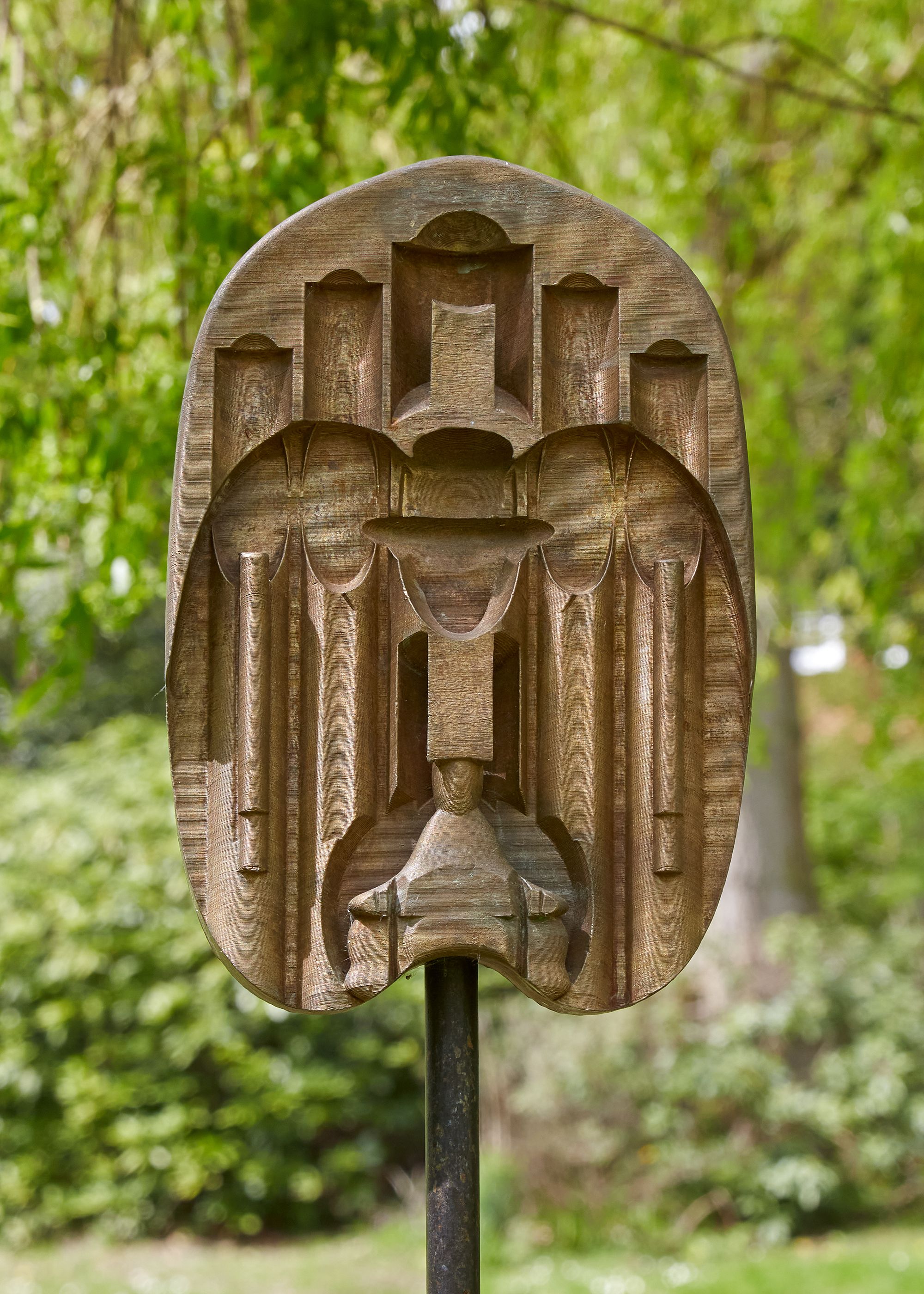
This year witnesses the seventh and final iteration of Contemporary Sculpture Fulmer, and, for the very first time, it is being been helmed by a guest curator – the celebrated Jenn Ellis, who first met the founders at her hugely ambitious show LUMA, which she created across an 8,000-plus square foot space in Old Street. Driven by the empathetic potential of art, the focus of Ellis’s curatorial practice is an investigation of the myriad relationships between work, space and context – namely, how an artwork creates a relationship with the space or situation that it's presented in, and then the contextual resonance it has to this particular point in human history. Her show at Fulmer certainly postulates some very interesting questions about our contemporary paradigm, in which the dynamic inter-relationship between the human animal and its various global environs seems to be under increasingly apocalyptic strain. Consisting of 23 different works brilliantly integrated into the landscape, and complemented for the first time by an indoor exhibition entitled One Foot In The Sky in a tiny on-site cabin, Contemporary Sculpture Fulmer promises to be one of the must-see highlights of the summer. Here, Ellis shares insight into five of the artists whose works are on display, and tells us why, ultimately, they all explore the commonalities of human experience.
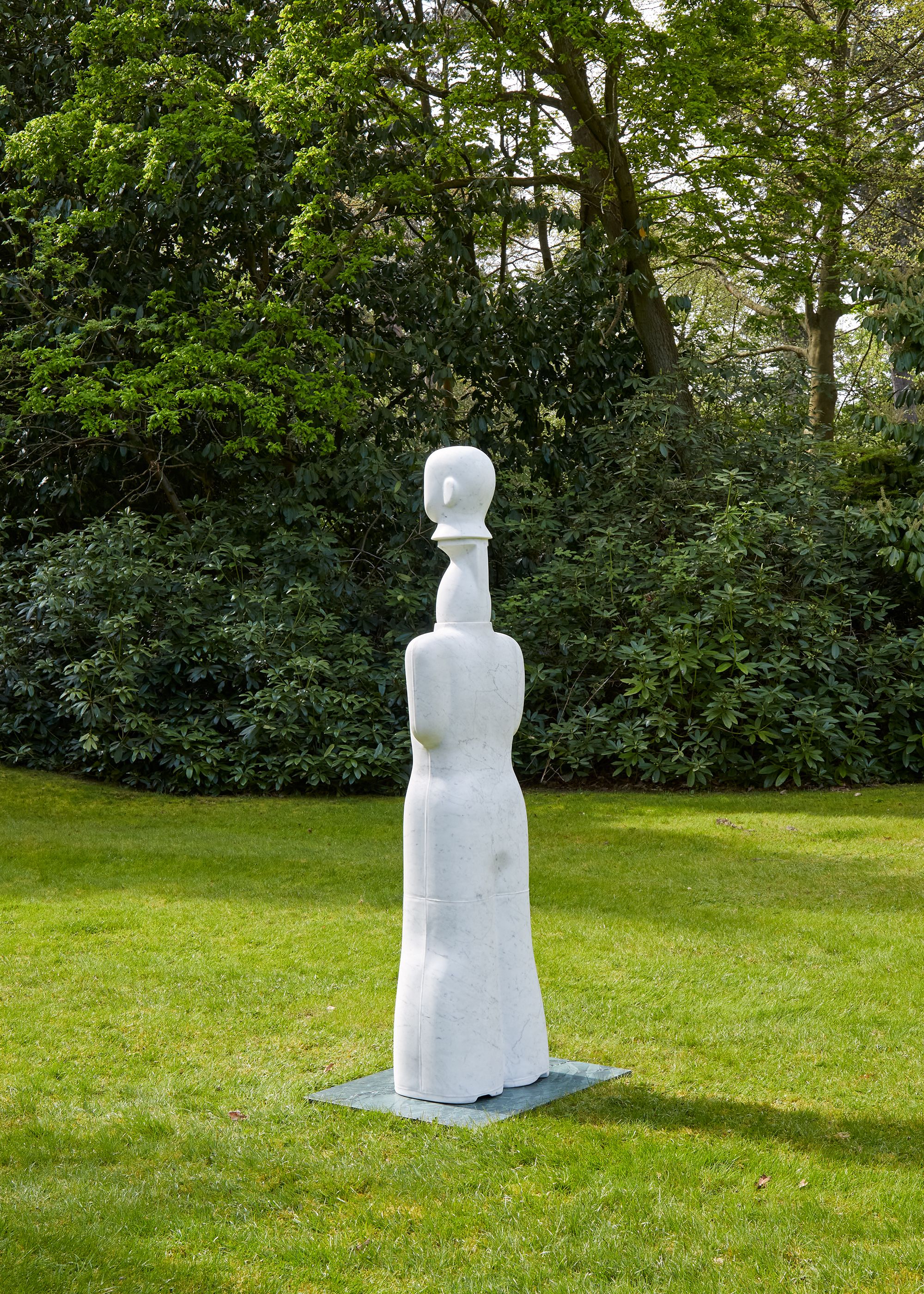
The first work I want to highlight is by Alex Seton. He’s an Australian artist, who has done work in the UK before with The Design Museum, and has been commissioned to create a number of war memorials in Australia. At Fulmer we are exhibiting an incredible standing mannequin he has created. At first sight, you might think it is a reference to stylised marble works from the mid-20th century. But actually, it's referencing war, and, more directly, target practice – the proportions being based on those used for shooting ranges. There are two very important things to highlight in terms of the general context of Alex’s work. Number one is that his mother is Egyptian, and came to Australia as a refugee during a moment of political turmoil. The second thing is that when you think of marble, you tend to think of wealthy palazzos, or the like, because it's this very rich material. But the reason Alex started working with marble was because he grew up in the bush, and his relationship to the material comes from picking up little rocks discarded from the quarry that was next door to his home. There is an important message in there about making use of what you have around you, and making something beautiful from what have been is discarded.
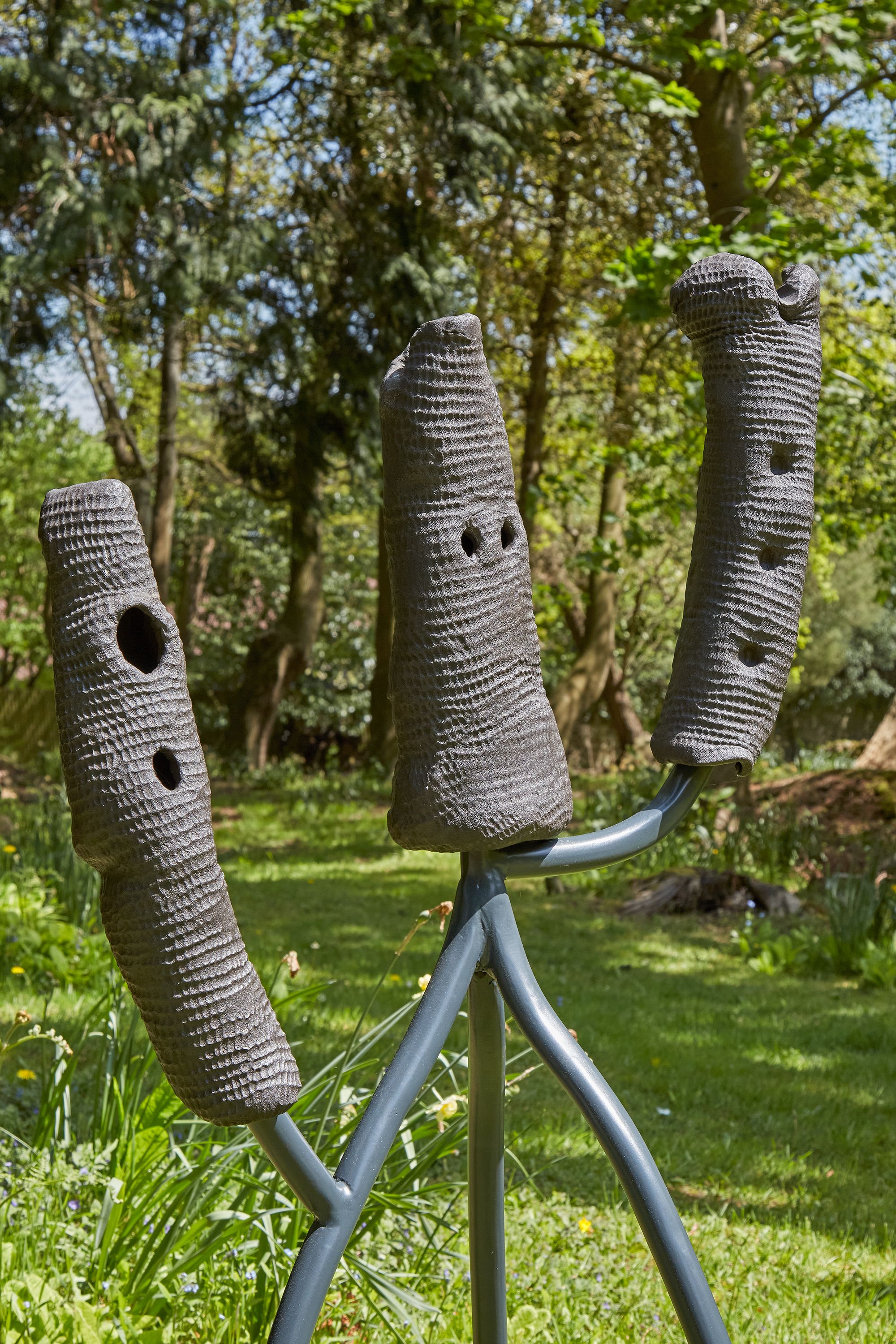
Whenever I curate a show, I want to bring in different global voices, and the Venezuelan artist Lucia Pizzani is an artist I was so excited to invite to Fulmer. She worked for a long time as an environmental researcher in the Amazon, and there are all these questions in her work about what natural resources are being used for in terms of industry – what are we tearing down, and what are we leaving behind? We are exhibiting two totem works she has created that are made out of clay, and that relationship with the materiality of earth is very important to her. There are some delineations of faces in the piece that reference the indigenous cultures of the Amazon, and every single imprint that you see in the clay has employed different types of bark accumulated from the jungle. There is a strong sense of trace-making at work, which is interesting in terms of what are the traces that we're leaving behind as a species. Lucia is actually doing a performance on June 24th, in which she'll be taking her clay imprints from a nearby tree on the estate – her work is very site responsive.
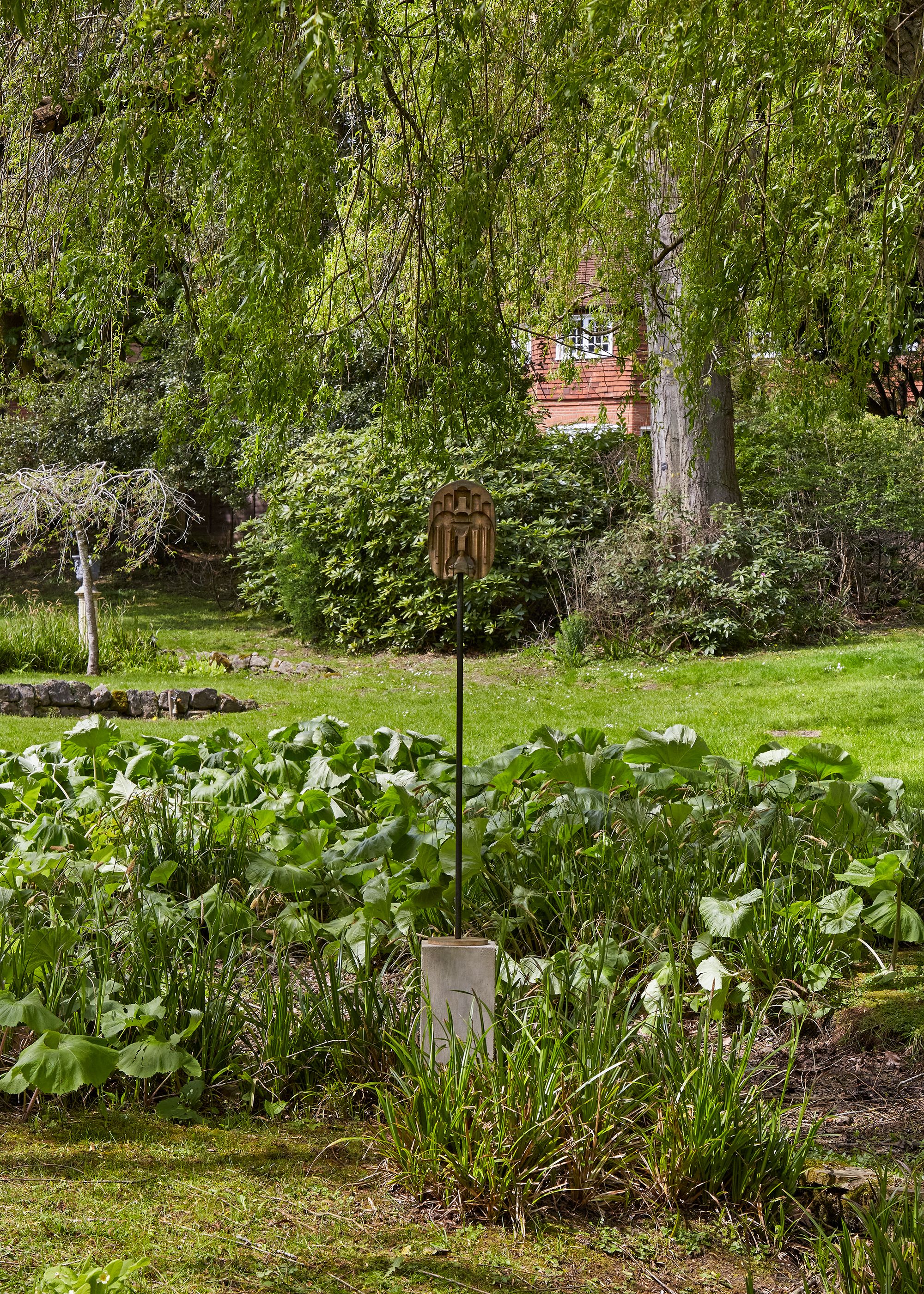
The third person I'd like to speak about at Fulmer is Amba Sayal-Bennett. Amba is a London-based artist, and is interested in the relationship between the body and machines. The work we are exhibiting at Fulmer is a sort of bronze head that almost feels like a mask, and is a work that she began ideating when she was at the British School in Rome. It is infused with questions about the legacy-making purpose bronze has been traditionally used for, and how it is usually very figurative, and so on. Here, you have something where the finished piece is anthropomorphic, but not at all distinctive and somehow very delicate, which is extremely unusual in bronze sculpture. The placement of the work is under a beautiful willow tree, so there's also this wonderful situational idea of the passing of time. Amba is really interested in creating articulations of reality in the digital space – employing digital systems to get the exactitude, and so on, and then taking her creation out into the physical realm. The work kind of explores our relationship with machines and new artificial creations. I think that's a really big topical question.
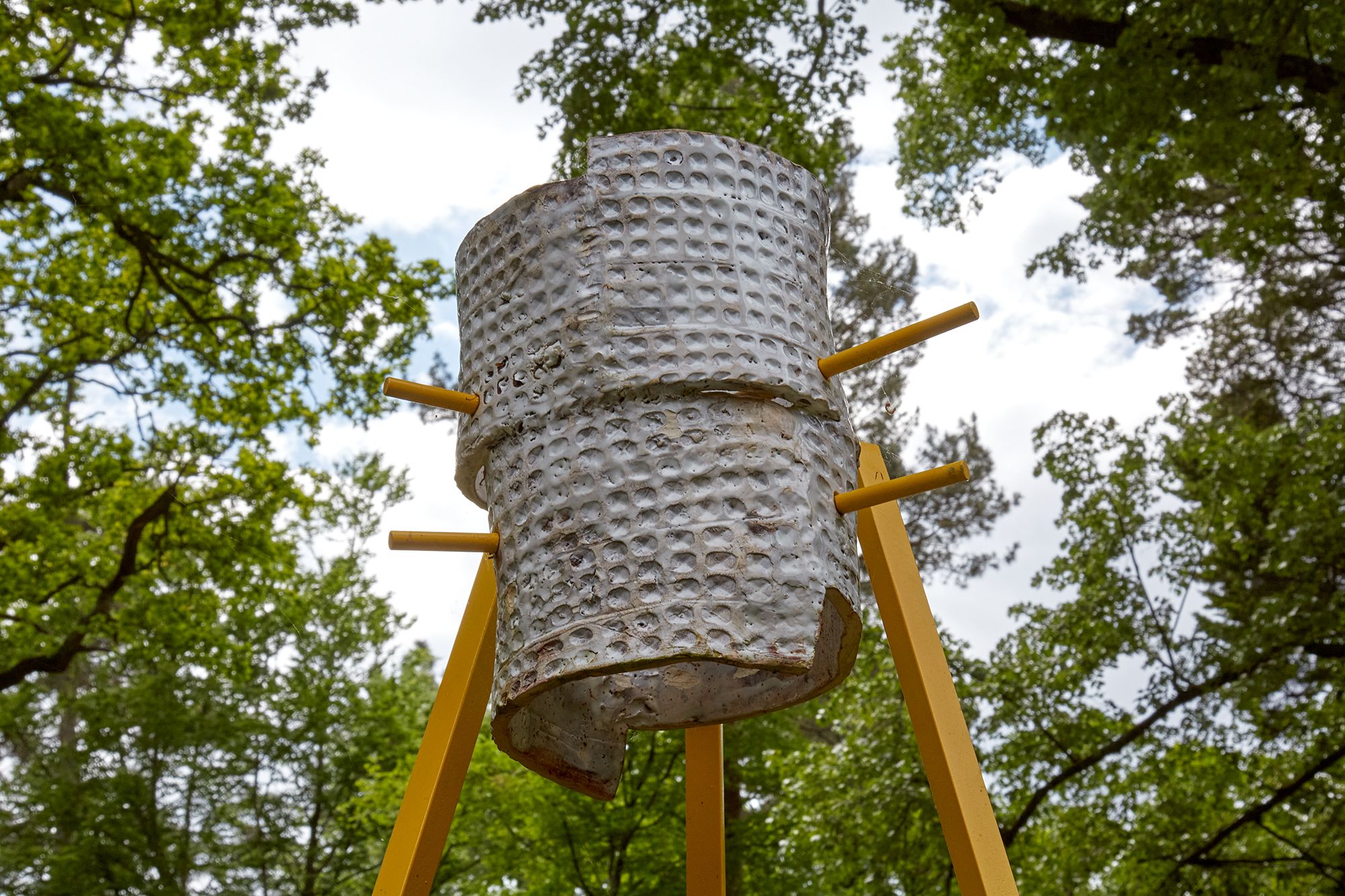
One of the things that is exciting about Contemporary Sculpture Fulmer is that it gives artists an opportunity to make their most ambitious outdoor works to date, and also to take on a residency. In that regard, I want to highlight the piece we are exhibiting by the incredible Chinese American artist Yen Mao, who was very active in the 90s in New York, before becoming a bit disenchanted with the art world. He left New York and moved to Mexico City, which unlocked questions around considerations of disaporic experience in his practice, and led him to explore the relationships between various East Asian communities in Latin America. The structure at Fulmer is one that he made on-site working with local foundries and ceramicists, and I think that's so interesting in terms of his sense of displacement and his ancestry. The work is a yellow standing structure, with ceramic components, which looks almost like a spine. It’s just above human height, and again references this sense of a universal human form, but in a different way to Alex or Lucia. It's such a great piece to explore, especially as people are being more switched on into the concerns of diasporic communities.
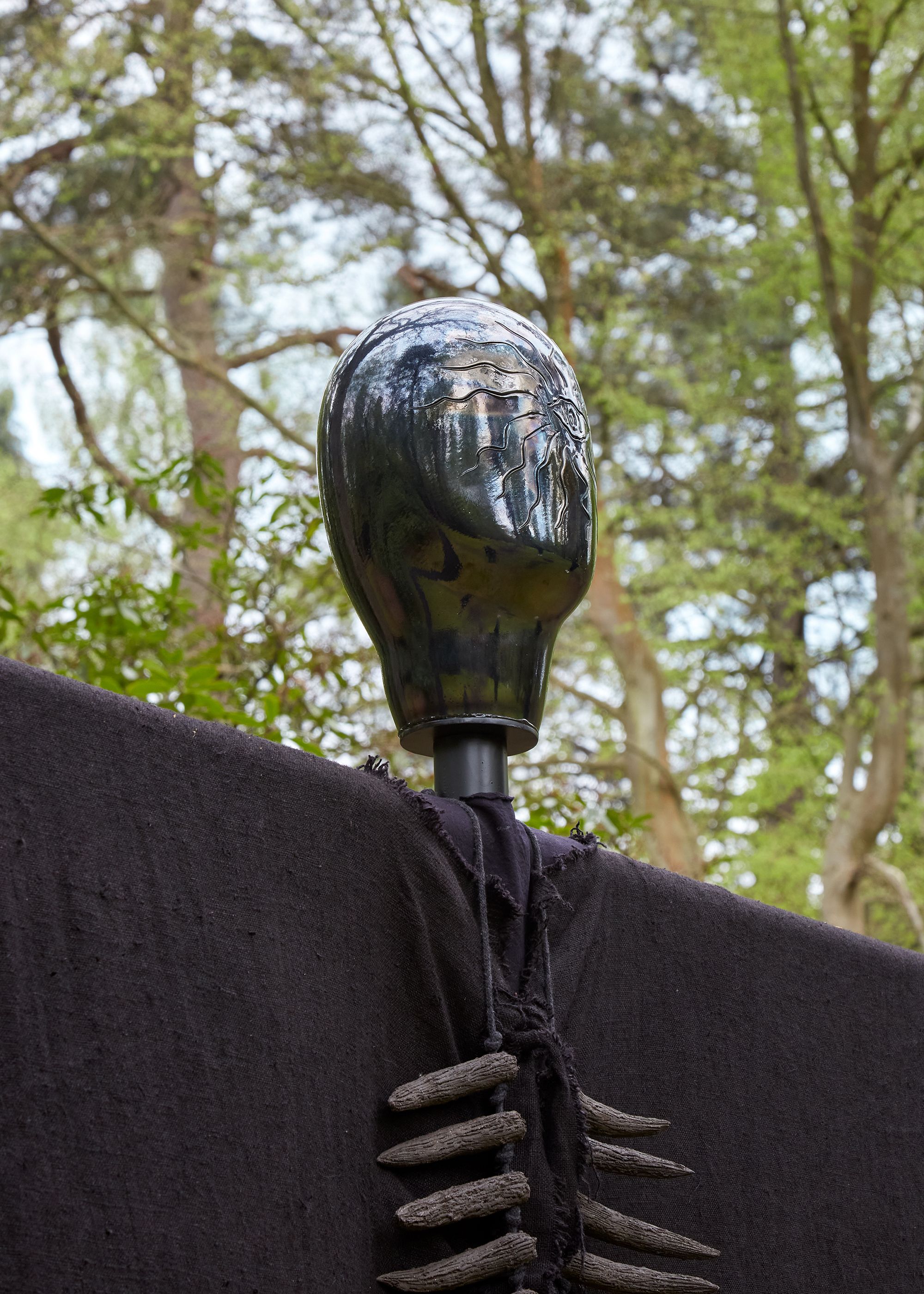
The final artist I'd like to highlight is Henry Hussey. What has been so special about Fulmer is that younger artists get an opportunity to create large-scale outdoor sculptures for the first time. Henry is a multi-disciplinary artist that I've shown a couple of times, and he's incredibly dynamic. He's also the co-founder of a new project space called OHSH, which has been really important in supporting artists both in and out of London. The work at Fulmer is his most ambitious sculpture to date. It consists of three seven-feet tall structures that reference pagan heritage and imagery. In a way, they could almost be seen as scarecrows, but, simultaneously, they feel like they could be depicting Jesus and the two apostles on the cross. He is referencing all of that together, and the sculptures are beautifully made. When you look at the heads and the hands, for example, you will see that they are created from glass that he has blown in real time, cutting into as it melts and inscribing it. There is just an absolutely stunning craftsmanship to the work.
Contemporary Sculpture Fulmer is presented by Brooke Bennington and runs until July 29th. You can find out more here
Images (top to bottom): Amba Sayal-Bennet, Aft, 2022; Alex Seton, Standing Manikin Target Series, 2007-2020; Lucia Pizzani, Ser Vegetal Ramas, 2022; Amba Sayal Bennet, Aft, 2022; Yeni Mao, fig 31, Lacuna, 2021; Henry Hussey, Untitled (Scarecrow II), detail, 2022. Photography by Corey Bartle-Sanderson. All images courtesy of Brooke Bennington.